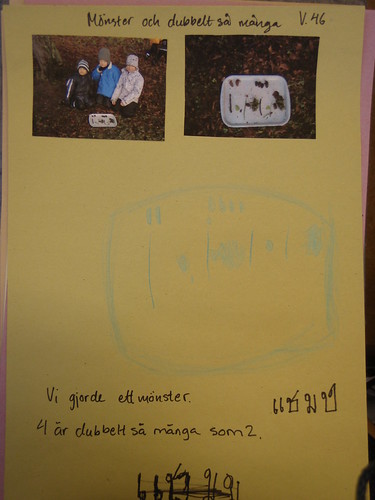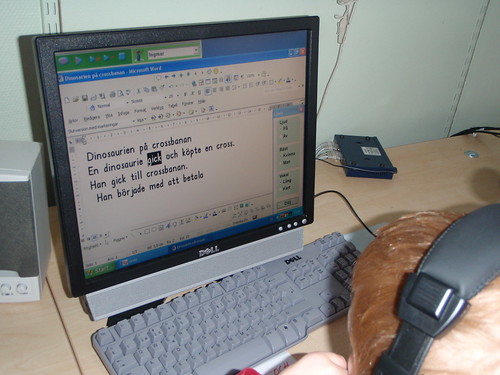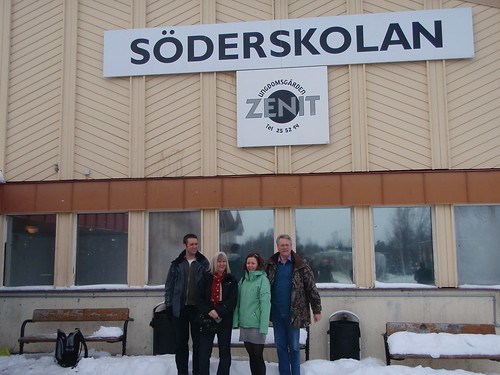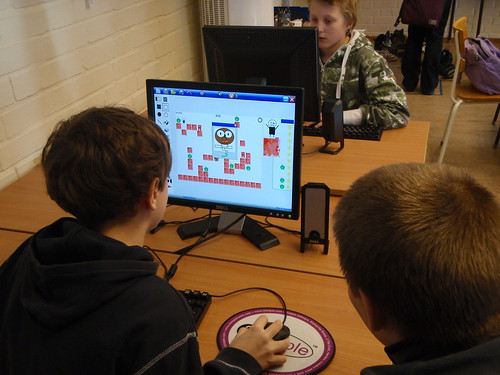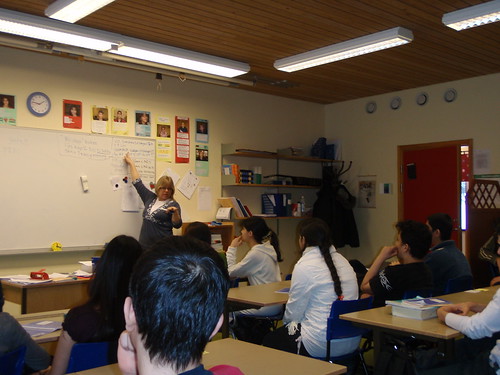 The state-run Sandviken Gymnasium has recently been refurbished due not in small part to increased competition from privately run competitors and the need to attract students and importantly the money that comes with them. ICT is put in the hands of the learners with most students beign issued with a laptop for them to use through the duration of their time in the school. There is wifi throughout the building to allow flexibility in where students work, with much of the learning taking place in small break-out rooms where groups can collaborate together. Student are free to take the laptops home to use and treat them as their own. As in the schools we visited earlier in the week, there is no internet filtering in place at all. A useful, if not attractive, feature of most classrooms was retractable mains cables hanging down from the ceiling to allow laptops to be easily plugged in.
The state-run Sandviken Gymnasium has recently been refurbished due not in small part to increased competition from privately run competitors and the need to attract students and importantly the money that comes with them. ICT is put in the hands of the learners with most students beign issued with a laptop for them to use through the duration of their time in the school. There is wifi throughout the building to allow flexibility in where students work, with much of the learning taking place in small break-out rooms where groups can collaborate together. Student are free to take the laptops home to use and treat them as their own. As in the schools we visited earlier in the week, there is no internet filtering in place at all. A useful, if not attractive, feature of most classrooms was retractable mains cables hanging down from the ceiling to allow laptops to be easily plugged in.Most of the ICT use seen evidenced was the ever-present powerpoint (extensively used by both pupils and teachers). We also saw some use of adobe flash for pupils to present their work, but this was beign used at a quite basic level.
As with most of the schools visited, they were using the 'first class' system for communication between staff and to a lesser extent pupils. However, it was evident that use was not uniform across the school and that not all staff utilised the system for anything more than email. It was recognised by the school that the system does not have full MLE functionality and they are seeking to move to another system in the future.
On the final day of the trip we visited a specialist 'Gymnasium'; a joint venture between major local company, Sandvik, and the local authority. This felt very much more like a business environment than a school. Each student had an individual desk and workstation in a student office. Much work was done in collaborative groups as it would be in the workplace. There were only 2 specialist programmes offered and these very much concentrated on the engineering skills favoured by Sandvik for their future employees. Facilities in this school were very good and it was obvious that much money was spent on the school by the parent company - high tech machinery, robotics and tools were routinely used by the students.
Interestingly, this school was the only one that we came across that has any sort of web filtering in place. However, this was not due to concerns over safety. Rather the filters are there to ensure that bandwidth-heavy content, including video and audio is not accessed. The school shares an internet connection with the main industrial site and they limit heavily how much they are able to use. This places obvious limitations on the way that the internet can be used as a tool for learning and teaching.

